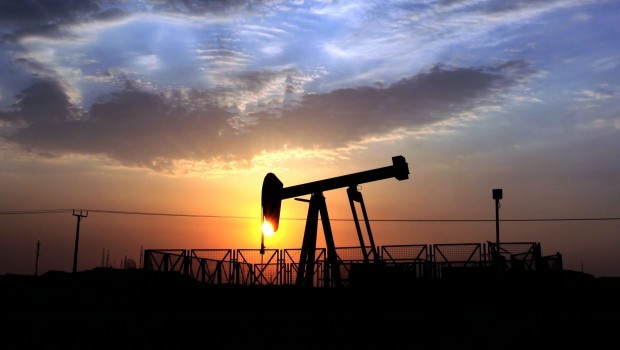It was only a couple of years ago when people, some in jubilation and others with trepidation, speculated about oil prices hitting the USD 200 mark per barrel. These days, however, all the talk is about a fall in crude prices, perhaps down to USD 50.
Were it to materialize, such a fall would have a devastating effect on oil-dependent nations in the greater Middle East.
Several factors foster the current speculation.
The first is the global recession that has proved longer than expected. Even countries not in recession, notably China, are experiencing lower growth and thus a falling demand for crude oil.
A decade ago, the US imported two-thirds of the oil it consumed. That is now down to 50 percent, and the trend is expected to continue.
The second reason is dramatic increases in production in two dozen countries.
The United States is leading the way, hoping to regain its position as the largest producer. This year, more than 3000 new wells are being drilled in Texas alone, producing as much oil as Venezuela. North Dakota, which had no production in 2008, is now producing 500,000 barrels per day.
Production is also rising in Iraq, reputed to have the world’s largest reserves. Despite instability, Iraq has embarked on an ambitious program to raise production to 12 million barrels per day by 2020.
Lukoil, the Russian giant spearheading the project, claims that the target could be reached in 2016.
Similar news comes from the Gulf of Guinea (now a major hub for crude production), the Gulf of Mexico and Indonesia. Losing its pariah status, Burma is also likely to emerge as a major producer soon.
Even Lebanon and Israel are beginning to dream of a golden future thanks to oil and gas. “Israel could become the world’s largest exporter of shale oil,” says economist David Caploe.
Elsewhere, a new word has entered the vocabulary: “fracking,” or extracting gas from subterranean reserves through hydraulic drilling.
The US is already the world’s largest “fracker,” followed by Canada. Britain started fracking this month and France is expected to follow soon.
In economics, as in gravity, what goes up comes down. So, oil prices could not have continued to rise forever.
Demand for oil is elastic. This means that, when prices rise, people can and do reduce consumption.
With the focus on the “oil thirst” in China and India, in, we might have lost sight of trends elsewhere. In the United States, oil consumption in 2012 was lower than in 2004. The latest estimates indicate a slowing in demand in China, now the world’s biggest oil importer.
The reason oil prices have not yet fallen dramatically is that forecasts about the depth and duration of the global recession have proved inaccurate. The US economy is still growing by about three percent per annum. Japan, the world’s second-largest economy, has just revised forecasts upwards to report a two percent growth rate. Even the European Union is, technically speaking, not in recession, with average growth rates of around two per cent.
The current situation is interesting because oil prices provide a better reflection of the state of the global economy than most forecasts. If prices have remained fairly steady, the reason is that the global economy has continued to grow, despite the financial crisis.
However, there comes a point when it is no longer the overall growth that sets the tune, but industrial production that is more directly dependent on oil.
Seen from that angle, oil prices should soon be heading downwards. The reason is that, while the overall economy is growing, industrial output is stagnating. The US is still showing a tiny growth, around two percent. Elsewhere, there is decline: in Japan by two-thirds of a percent and in the European Union by five per cent. (In Spain, it is almost 20 percent!) Even China, Brazil and India are experiencing a fall in industrial output.
For oil prices to fall, you don’t need a recession in the US, Japan and Europe. All you need is a flat rate of industrial production.
Since the end of the Second World War, the global economy has experienced 10 recessions. All but one of those recessions started with sharp rises in prices of crude oil. All ended with dramatic falls in oil prices. In the 1980s recession, oil prices fell by almost 70 percent.
The worst situation is that of yoyo prices. Uncertainty about prices will harm both producers and consumers. The producers will never know what levels of investment are required to keep up with actual demand. The consumers will never know what portion of their costs of production need be allocated to energy.
Yoyo prices would specially harm members of the Organization of the Petroleum Exporting Countries (OPEC). Very high prices remove the urgency for investment in alternative sources of revenue and discourage the reform of public services and the removal of subsidies, perks and other features of a rentier economy. Very low prices, on the other hand, make investment in developing alternative sources of revenue difficult, if not actually impossible.
So, is there an ideal oil price? Depending on the circumstances, the answer is yes.
The ideal price is not one that the consumer can afford, but one that is not too high to provoke a decline in global industrial production.
